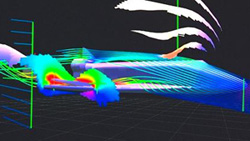Click on image for full size
NASA
Related links:
Welcome Home Columbia!
News story originally written on July 18, 1997
The shuttle Columbia quietly returned to Earth Thurday, July 17. It carried with it substantial research on the topics of combustion and plant growth.
During the 16 day journey (6.2 million miles later!), the astronauts took turns setting 206 small fires in sealed chambers, 62 more than planned. They also ignited the weakest flame ever recorded- one that flickered at 1/50 the luminosity of a birthday candle! The hope is that these combustion experiments done in space will improve combustion process on Earth, which would reduce human-produced air pollution.
Cartoon character Popeye would have been content on this mission, as the Columbia astronauts grew spinach, clover and protein crystals during the mission. This served as preparation for the future international space station where residents will have to grow some of their own food.
"Columbia has performed almost flawlessly, " said Commander James Halsell Jr. Columbia did have a window dent about one-fifth of an inch across caused by a tiny meteoroid. However, NASA's oldest shuttle had few other items in its "problem log".
NASA mission manager Teresa Vanhooser said she wasn't disappointed that the research was overshadowed by news of the Mars Pathfinder and the crippled Mir. "I'm sure that when the papers come out in all the scientific journals that they'll get their due respect," she stated.
NASA's next shuttle flight is a research mission by Discovery in August.















